Deteriorating performance among employees will usually arise from time to time. The decline can sometimes result from various reasons that may or may not be within the manager’s and employee’s control. In cases where it is within their control, a corrective strategy can be devised in a performance improvement plan (PIP) and implemented.
A PIP is an effective way for employers to protect their investment in employees and retain them instead of firing them. Therefore, such a plan precedes disciplinary actions such as transfer, demotion, or termination.
This article will discuss how an employer can utilize it to improve the performance of their employees, the components of an effective PIP, and additional information surrounding its use at the workplace.
Performance Improvement Plan Templates
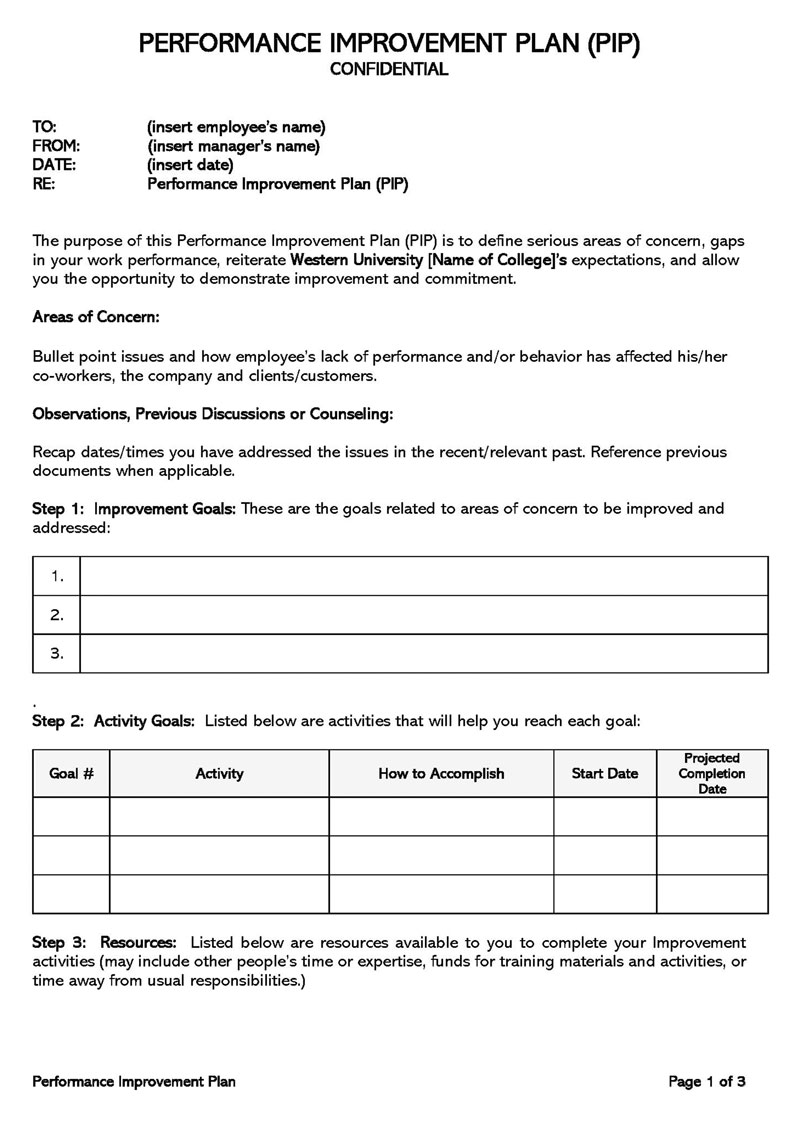
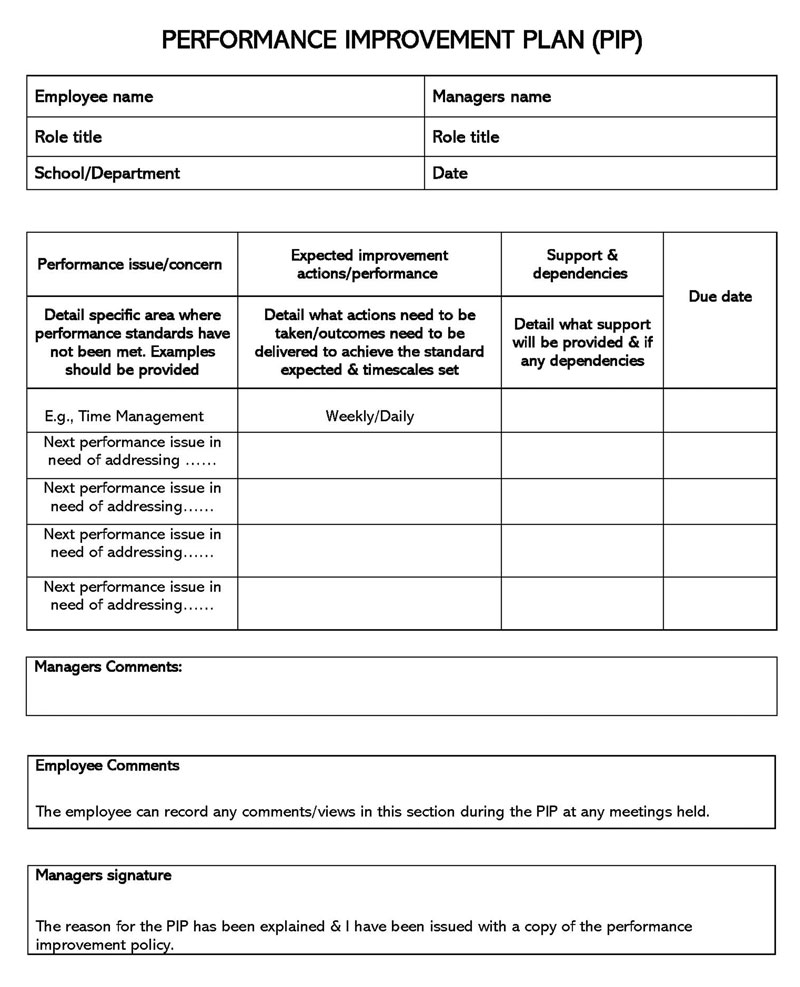
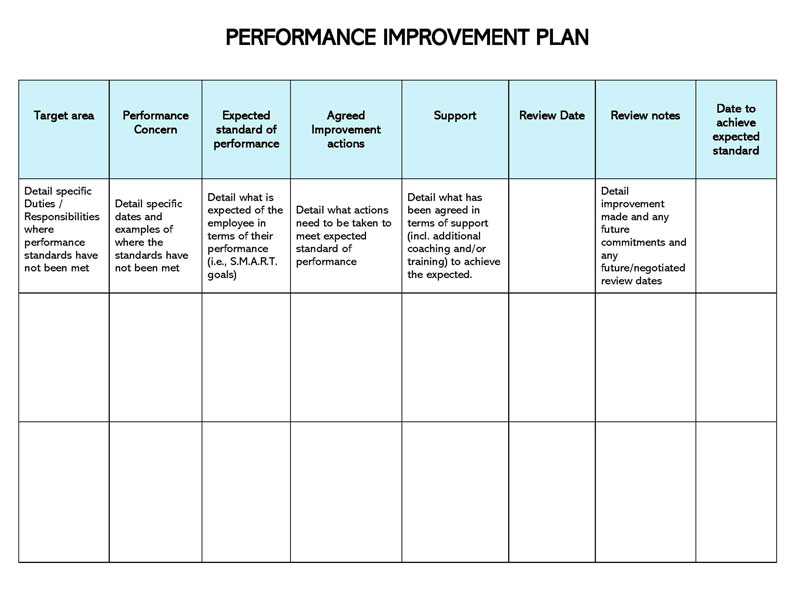
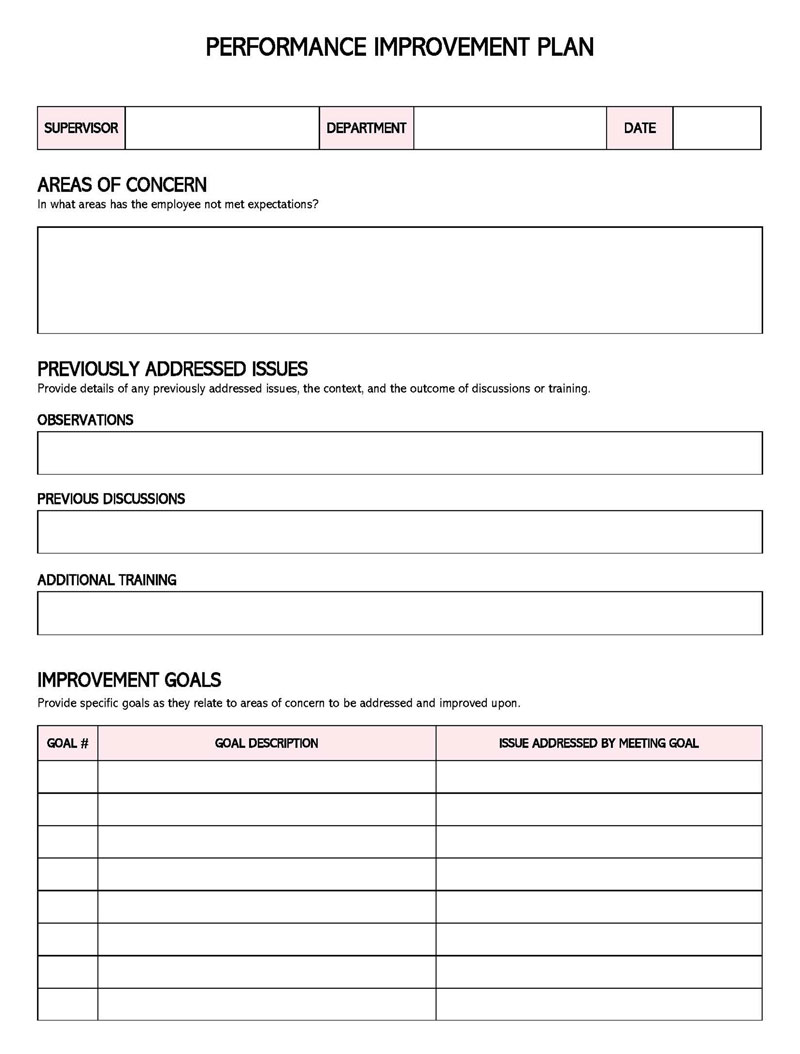
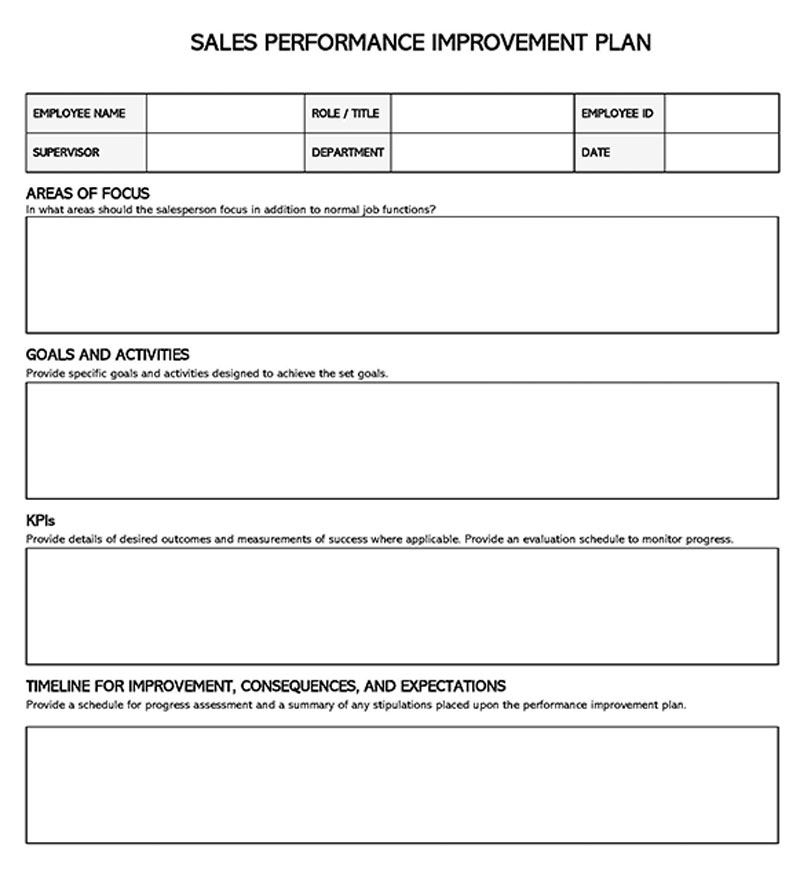
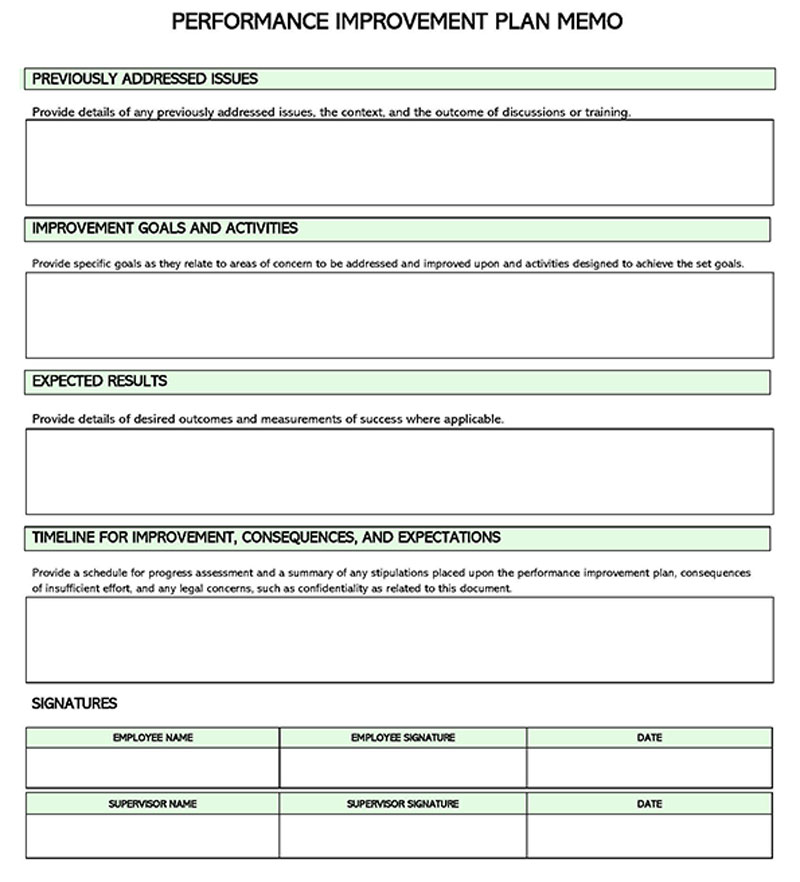
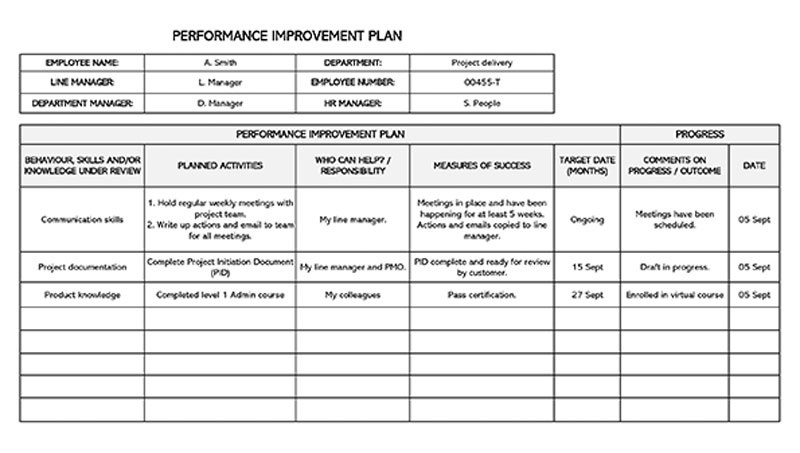
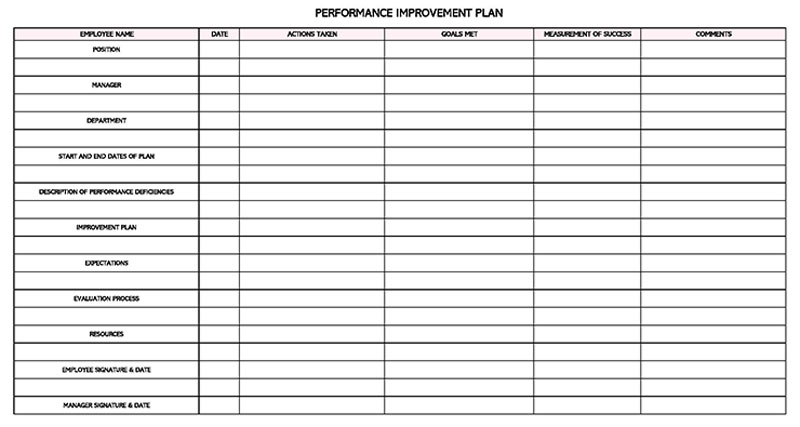
What is a Performance Improvement Plan?
It is a written set of intentional actions aimed at helping an employee overcome their performance and behavioral deficiencies at the workplace.
A good PIP typically outlines the issues at hand, the expected level of performance (goals), and the timeline for each goal. Essentially, it is a probationary period program.
Benefits
These are an integral part of employee performance evaluation and development. While, from the surface, it appears to be beneficial to the employee only, it is beneficial to a company.
Since this plan is designed to be objective to assist an employee in performing their duties and responsibilities to a required standard/level, once successfully implemented, it can result in more competent employees, which are a positive addition to the company.
In addition, it is part of a good employer-employee relationship. It helps employers to communicate with their employees.
Also, employers can incorporate new skills they want their employees to adopt in a plan instead of creating separate training programs for long-serving employees. This facilitates employee retention, saving time and money used for new recruitments.
How to Use It?
A template is created once an employee exhibits poor performance or undesirable behaviors. Utilizing it begins with identifying the signs of unusual or uncharacteristic patterns in an employee’s performance and behavior. This is followed by an in-person intervention where the employer discusses the concerns with the employee.
Next, the employer and the employee, in collaboration, design the plan template. The employee is then expected to meet its objectives within the given timeframe.
The employer oversees the execution of the plan to ensure the employee succeeds. Oversight involves monitoring progress and providing feedback. Monitoring will require periodic performance reviews to ensure the employee remains on track.
Once the objectives of the template have been realized or the timeframe expires, the employer should determine the next course of action. This will ordinarily take the employee off the “probation” period or extend the timeframe if there are signs of improvement. If the employee displays no improvement, further disciplinary actions can be taken.
Reasons to Implement It
Some of the reasons that necessitate the use of a template are as follows:
- Employers can resort to it when high-performing employees start exhibiting reduced work quality or productivity and undesirable habits such as tardiness or other uncharacteristic traits.
- Templates are also used as employee performance improvement tools, especially when the employee handbook does not offer or define the appropriate strategy.
- This plan can also be used when an employer wants an employee to improve specific areas in their job even though their overall productivity is acceptable. This plan specifies the areas of concern and focuses on them when offering appropriate corrective actions.
- Employers use them to support employees facing personal challenges affecting their work performance. Such a plan can involve supporting actions outside the workplace, such as professional counsel.
Factors to Pre-Consider
While it is usually up to an employer to determine when to create it, it is always important to factor in the following before creating the document:
Habitual performance problems
This plan should not be crafted for one-time shortcomings in performance and behavior. Instead, these plans should be introduced when there has been a continuous record of poor performances. One-time issues can be resolved without a PIP.
Action plan
Before creating a template, managers, supervisors, and HR should consider whether the identified issues can be resolved with an action plan. An action plan is not always viable in every situation; for example, issues such as violent conduct don’t require it, whereas lateness or work quality can be resolved using a focused action plan.
Reasonable accommodation
It is typically not the first intervention when an employee performs poorly at work. Other alternatives should be explored first, such as training for performance issues or moral support for personal issues. It should be resorted to once preliminary interventions prove futile.
Key Components
An excellent template should outline the employee’s journey to improving their performance. It should have certain elements that indicate the plan’s starting point, intermediary actions, and endpoint to describe this journey.
These elements include:
Discuss why is it needed
The performance plan should start with a background on why it is needed. This typically involves writing a statement that discusses the company’s performance expectations, values, or ethics and why it is necessary to maintain the expected level of performance and conduct.
Identify the problem
It should list all the problems/issues the employer has shown. The problem(s) should be specific and supported with examples. The reasons behind the poor performance or behaviors can be given when defining the problems. This information can be collected during the preliminary meeting with the employee.
Measurable objectives
The templates should adopt a SMART structure, indicating measurable and realistic goals for the employee. Objectives create a baseline for measuring success. Each objective should align with the associated problem. Also, it should outline any support the employer will provide about the objectives. The backing can be offered in resources, mentorship, training, reviewing projects, etc.
Make a schedule
A comprehensive PIP should have a realistic schedule for achieving the agreed-on objectives. The schedule should outline the deadlines for intermediary action items and the end date of the entire improvement plan. The schedule can also include periodic check-ins to monitor progress.
State the consequences
Lastly, the template should outline consequences imposed on the employee if they fail to achieve the set objectives. Disciplinary actions such as termination are examples of consequences.
Review the plan
Before compelling the employee to heed the contents, managers or supervisors should review the document first and have a senior staff member or HR ensure the plan is as per FLSA (Fair Labor Standard Act) and it does not compromise the employee’s rights and freedoms. A fair and objective PIP should be focused on helping the employee, not punishing them, and as a result, it must satisfy certain qualities.
For example, it must be free of any non-performance-related bias such as age or religion. Also, the plan, its objectives, and the timeframe must be realistic. Lastly, the proper resources needed to implement the improvement plan must be available and accessible to the employee.
Practices to Improve the Effectiveness
The effectiveness of a template is dependent on multiple things. These practices include:
Set clear goals
Clarity is an essential quality in the plan. Objectives are easier to follow and fulfill when they are clearly defined. The more precise the objectives are, the more successful the plan will be, and the contrary is true. Therefore, employers should try as much as possible to make the employee’s improvement easier. The goals should also be achievable.
Communication is necessary
Communication is fundamental throughout the implementation of the plan. When discussing the need of it with the employee, the manager or supervisor should listen to the employee keenly and consider their reasons or explanation for poor performance when designing it. When an employer is replying and relaying their expectations to the employee, they should observe their tone to ensure the performance improvement doesn’t come off as a punishment but rather a support intervention. Communication should also be maintained throughout the implementation period.
Regular check-ins
Managers and supervisors should always incorporate regular check-ins as part of the monitoring process. Check-ins increase the effectiveness by ensuring progress is recorded, and the employee maintains consistency.
Work on the root cause
Employers should always aim to create a template that addresses the root cause(s) of poor performance and habits. Like any other person, employees deal with a wide range of challenges, which will often be reflected in their performance at work. Having a lengthy discussion on the issue can help establish the root cause.
Highlight positive aspects of the employee
A huge incentive for employees to improve is appreciation. Sometimes the employee might be feeling under or unappreciated. Therefore, employers should try to mention positive attributes the employee brings to the company and reassure them of their potential. The employer can talk about the improvement plan being an attempt to get them to realize their potential rather than a directive.
The plan should be structured
The template should be well organized/structured. It should outline all the standard elements of a great PIP – the reason, a list of issues, measurable and achievable objectives, schedule, and consequences.
Provide extra support or training
Performance improvement in employees is usually a collaborative effort. Employers, therefore, need to provide support to employees to ensure that it is effective. Employers can provide necessary tools and resources, such as training to assist employees in effectively achieving the objectives laid out in the performance improvement plan template.
Clarity in consequences
The consequences of failing to attain the expected performance levels in the template should be communicated to the employee. When employees clearly understand the ramifications of not correcting the expressed concerns, they are more motivated to implement the PIP.
Implementation
Once the necessary parties have approved the plan, it can be implemented. Of course, the implementation duration varies from one situation to another since different action items and objectives require different timeframes and different people have different capabilities.
However, the steps below during the implementation can be adopted:
Discuss it with the employee
The first step of implementing a template is discussing it with the employee. The discussion should be done in person due to the gravity of the matter. Hurried discussions can result in misunderstanding and further confusion for the employee.
Communicate the goals and timeline
The employer should then discuss what the plan is expected to accomplish. They should ensure to guide the conversation in a way that shows that it is meant for the benefit of the employee and the company.
Let the employee ask questions and receive clarification
Lastly, the employee should be allowed to raise any questions. Creating an environment where the conversation is bilateral helps ensure the plan is successful. The employer should then answer any questions in clarity.
Track its impact
Tracking the impact on the employee’s performance and habits is much needed to determine the plan’s success. Regular check-ins and meetings are part of monitoring the impact. While intermediate impacts are essential, the impact should be measured at the end of the plan’s schedule. Sometimes the impact can be satisfactory while in some cases unsatisfactory. The next step after unsatisfactory impact can be a second plan or disciplinary action.
Frequently Asked Questions
The duration of a performance improvement plan is not fixed and will be dependent on the circumstances at hand. Factors that influence the length of the plan are the amount of change needed, the length of action items, the complexity of the employee’s responsibilities, the number of issues, etc. With that in mind, most PIPs will last thirty, sixty, or ninety days.
An employer can intervene to assist an employee performing poorly at work using a PIP. To ensure the problem is addressed, it should identify the issue that needs to be corrected, support the existence of the issue using examples, define the expected level of performance and behavior, declare available training and support, and schedule for its execution. The employee should also sign the document and have an acknowledgment statement that they agree to the document’s contents.
Relaying poor performance feedback to an employee is a gradual process. It involves continuous recording of poor performances and documenting them. Once a meeting is held with the employee, there will be sufficient evidence/examples of poor performance. Sometimes employees can have a bad day at work, and one-off poor performances may not even require intervention.
Multiple performance issues are observed among employees regardless of the profession or industry. Employers commonly recorded issues are low productivity, continuous failure to meet expectations/deadlines, absenteeism, excessive sick leave, client dissatisfaction, poor professionalism, tardiness/lateness, inaccurate or poor work, wasteful resources, and motivational deficits.




